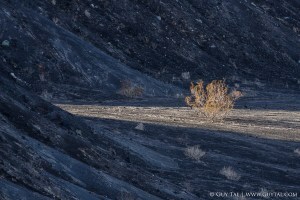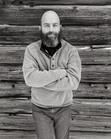On Seeing
Accustom yourself every morning to look for a moment at the sky and suddenly you will be aware of the air around you, the scent of morning freshness that is bestowed on you between sleep and labor. You will find every day that the gable of every house has its own particular look, its own special lighting. Pay it some heed and you will have for the rest of the day a remnant of satisfaction and a touch of coexistence with nature. Gradually and without effort the eye trains itself to transmit many small delights, to contemplate nature and the city streets, to appreciate the inexhaustible fun of daily life. From there on to the fully trained artistic eye is the smaller half of the journey; the principal thing is the beginning, the opening of the eyes.
—Hermann Hesse
My fondest childhood memories are of times I spent roaming the seemingly endless fields around my home rapt in fascination with critters, flowers, interesting rocks, and the occasional relic of past cultures, almost always alone, sometimes with my dog. This was long before the age of mobile phones. I did not own a camera then. Back then, it never occurred to me to make any record of my finds nor to share my experiences with others—not in images, not in writing, not even telling anyone what I saw and felt. The point of being outside was not to bring anything back or to let anyone know what I was up to. The point was to experience—to see, to explore, and to be fascinated by—sensations and discoveries.
Little did I know then how profoundly these early experiences will shape my life in the years to follow in two important ways: they taught me the great pleasure of doing certain things for the sheer sake of doing them, and they rewarded me with a trove of beautiful memories to carry with me along the journey of life. They gave me the skills and sensibilities to find solace, sanctuary, and healing in natural places in both good times and in times when life was otherwise hard to bear. And, when I was not able to do so in body, they gave me a rich inner world of beauty and memories I could relive at will and could take with me anywhere I went. In a larger sense, they also gave me the absolute knowledge that even when the future seemed hopeless, I had already lived a deeply meaningful life and to feel grateful for all the wonder and beauty I was fortunate to have seen and felt, which seems to me the most worthwhile state one may aspire to, and without which life—no matter how otherwise pleasant or materially abundant—may seem pointless.
Photographers, more than other people, seem to relish and glorify seeing, sometimes even characterizing their discipline as “the art of seeing.” Still, in my experience, despite so many making such statements, few appreciate seeing in earnest as a source of pleasure and meaning, separate from and independent of “capturing” some of what was seen. So many times, I have heard photographers referring to times spent even in the most sublime of places without making any photographs as “wasted.”
The thought occurred to me recently when out in the desert peering through my binoculars at nothing in particular; just scanning and admiring the vast view and geography before me. So often when I’m out, I stop to point my binoculars at almost anything of aesthetic interest—critters going about their business, backlit grasses, flowers, the sides of mountains, insects covered in pollen just a few feet away—and become so fascinated that for a period whose duration I’m not even conscious of, I forget all else. I lose myself in the wonder of seeing, with no other goal or expectation other than to savor details, colors, movement. For the life of me, I can think of no less appropriate a word to refer to such times than “wasted.”
Very few photographers I know truly savor and appreciate seeing for its own sake, not even as an important and enjoyable precursor to making photographs. One such photographer that comes to mind is Walker Evans. “Leaving aside the mysteries and the inequities of human talent, brains, taste, and reputations,” Evans wrote, “the matter of art in photography may come down to this: it is the capture and projection of the delights of seeing; it is the defining of observation full and felt.” Another such photographer was Henry Peach Robinson. “Art,” he wrote, “is the result, in the first place, of seeing rightly, and, in the second place, of feeling rightly, about what is seen.” Yet another was Minor White who often wrote such quips as, “Watching the way the current moves a blade of grass—sometimes I’ve seen that happen and it has just turned me inside out,” and “I seek out places where it can happen more readily, such as deserts or mountains or solitary areas, or by myself with a seashell, and while I’m there get into states of mind where I’m more open than usual. I’m waiting, I’m listening. I go to those places and get myself ready through meditation. Through being quiet and willing to wait, I can begin to see the inner man and the essence of the subject in front of me.”
Of course, most people don’t share the circumstances of my formative years nor the personality traits that predisposed me to spend so much of my time in solitary communion with nature, watching, listening, smelling, allowing my thoughts to wander, most often for no other reason than to deepen and enrich the quality of my living moments. Most people, alas, are conditioned from a young age to strive for some kind of result to justify their investment of time: something they can share with others; something to prove that their time was not “wasted” in “idleness.” This is a shame.
In my writings and teachings over the years, I have always stressed the rewards—in terms of the quality and meaning of one’s life experiences and memories, and that these are well worth prioritizing well above any photographs or qualities of photographs, and even to the exclusion of making photographs if the act of photographing may distract from or prevent prolonged immersion in a deeper emotional state. After so many years I regret to say that this advice—perhaps the most important one I had to give as an educator—has also been the one that most of my students (even those I was able to convince) have failed to put into practice. This is, of course, because of no fault of theirs: it is much easier to form good habits where none yet exist (as I was fortunate to do by mere coincidence) than to unlearn bad ones, which may take great discipline and a lot of practice and may be rife with frustration. And yet, I remain convinced that—hard as it is—evolving the capacity to appreciate, to revel in, and to find reward in seeing for its own sake is one of the most worthwhile investments that a person can make in themselves, even if they never touch a camera.




